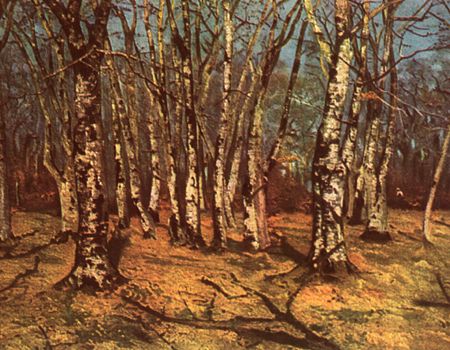Although he was just 32 years old when he died, Ion Andreescu was living behind several major works among the several hundred paintings, ranging from landscapes and still lifes to portraits and flowers, marked by a grave and profound style. A prolific and talented young artist, interested in several genres and subjects, he mostly preffered landscapes, selfportraits, still lifes, drawn especially by nature. His works are also marked by a certain melancholy.
Born in Buicharest, in a rather modest family, he made his first works while he was still in school, and in 1869 gave up highschool and enrooled at the National Arts School, which was managed by Theodor Aman. He was one of the best and most serious of all students, coming to every class, trying to learn and better himself in all of the artistic fields, making quick and real progress. By the end of his studies he would be considered one of the most promising and talented of the young artists.

Due to his family poverty, he had to put his love for art in second place and tried to find a job as a teacher, to support his brothers, sisters and parents. It was a great sacrifice, but the artist hoped he would still have enough time for his paintings and drawings. He would be rejected several times, for he was virtually an unknown name and nobody took the time to help him. Nobody, except his former teacher Theodor Aman, who finally offered Andreescu a menial job, as a substitute teacher at the Business School in Bucharest, in 1870. He would be laid off less than a year later and further won another job as a teacher of drawing and caligraphy in Buzau.
A strict and severe teacher, trying to familiarize his students with the history, genres and practices of art, he continued working in his free time for his paintings and drawings, exhibiting some, rarely selling one, at the same time receiving several important and respected distinctions. He contiuned teaching in several places and only in 1878 he managed to have enough money to leave for Paris, where he enrolled, like so many others before him, at the Academie Julian. During the summer he had the chance of working in nature, in open spaces, at the famous Barbizon and in other places. It was here, in Barbizon, that he eventually met and befriended Nicolae Grigorescu.
He would return to his home country, enriched by his French experience, only muck sicker than before and in even greater financial difficulties. He died in 1882, leaving behind hundreds of works, which would be rediscovered and loved only after it was much too late for Ion Andreescu, the man. But great for the artist, one of the best in 19th century Romania. Some claimed he was the first real modernist, others that he mixed very inspiringly the Romanian traditions and the Western influences. Both opinions were right, of course.
Ion Andreescu was a great talent, and at the same time a tragic figure. His early death was a great loss for all art lovers, yet his prolific talent left a great number of impressive works.
Photo : www.ici.ro
2008-06-06

































